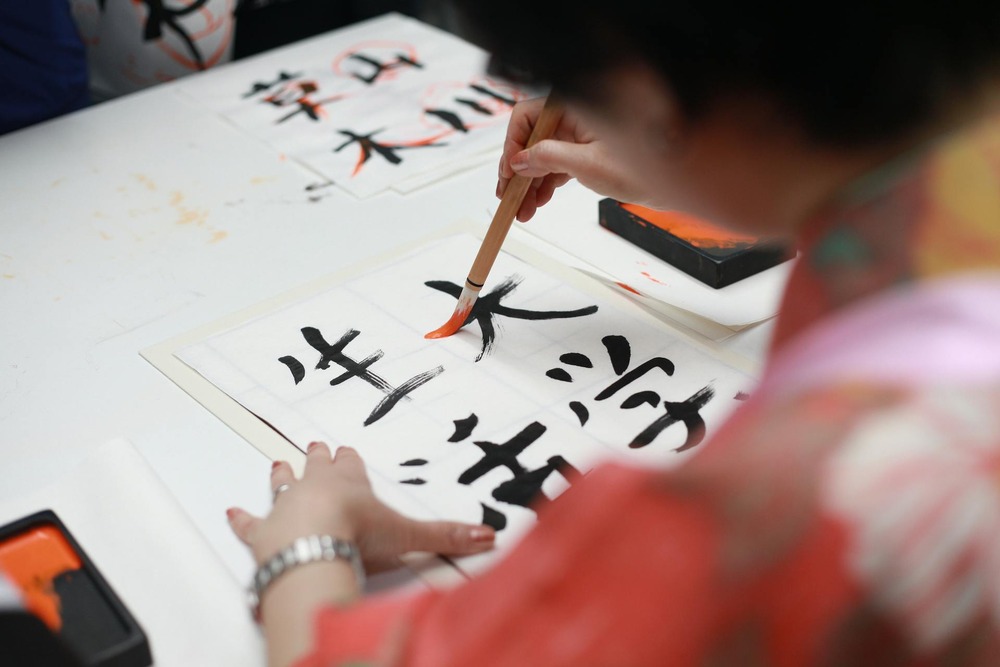
Unraveling the Challenge: Translating Japanese to English
Japanese is the ninth most commonly spoken language worldwide, with about 123 million speakers across the globe. It is also considered one of the hardest languages to translate, particularly from Japanese into English. Successful translation from Japanese to English demands a thorough grasp of the language and an appreciation for cultural subtleties that frequently affect how words and phrases are understood. This is why translating Japanese into English is famously tough. In this blog, we will delve into the complexities that translators encounter when translating Japanese to English.
Why is it Difficult to Translate from Japanese to English?
Translating from Japanese to English is a complex task. It goes beyond merely replacing words from one language with those of another. Below are the eight major challenges translators encounter when working with this language:
1. Different Origins
Japanese is an Altaic language, part of the broader Ural-Altaic language family, making it grammatically a distant relative of languages like Korean, Turkish, and Mongolian. In contrast, English falls under the Germanic category within the Indo-European languages, linking it to German, Dutch, and Scandinavian languages. Japanese, an Altaic language, operates on an agglutinative structure, which entails forming words by combining morphemes that indicate tense, subject, and place – roles typically filled by prepositions in English. In simpler terms, Japanese constructs are long and multifaceted, making them complex to translate. A translator must decode each morpheme's meaning and its contribution to the overall sentence in translating from Japanese to English.
2. Japanese Uses More Than One Type of Alphabet

Japanese employs three distinct writing systems: Hiragana, Katakana, and Kanji, each with its own unique alphabet. Hiragana is utilized for indigenous Japanese terms, including grammatical particles and various names. Hiragana and Katakana each include 46 symbols covering all sounds in Japanese. Katakana specifically handles the phonetics of foreign-origin words. Foreign loanwords, particularly from European and American sources—referred to as "外来語" (gairaigo), or "foreign language," in Japanese—are typically written in Katakana. Meanwhile, Kanji features complex characters that symbolize concepts, not simply words or phrases, originating from Chinese characters and are prevalent in daily Japanese use. The language complexity increases as there are over 2000 regularly used Kanji characters and several thousand more used less frequently. For translators, this intricate writing style makes direct translation not always feasible. It requires experienced translators who fully understand the language and its written forms to ensure that no meanings are lost when translating from Japanese to English.
3. SOV Instead of SVO
Coming from two distinct linguistic backgrounds, the sentence structures in Japanese and English vary significantly. In English, sentences are arranged in a Subject-Verb-Object order, whereas in Japanese, they are structured as Subject-Object-Verb. Thus, in translating from Japanese to English, a translator needs to fully comprehend the entire sentence first, and then reorganize the words to align with the typical structure of an English sentence. For example: English: “Haru plays guitar” Japanese: “ハルはギターを弾きます” Haru wa gitā o hikimasu, the word order is “Haru guitar play”
4. No Subjects or Plural Nouns

In Japanese, the subject of a sentence is frequently left out when the context makes it obvious. Additionally, the language does not distinguish between singular and plural nouns and employs unique methods for counting adjectives and pronouns. Consequently, a literal translation of a Japanese sentence into English might fail to specify the number of objects or individuals being referred to. For example: English: “I received an invitation from Daniel.” Japanese: “ダニエルから招待状を受け取りました。”(Danieru kara jōtaijō o uketorimashita) which means “Daniel form invitation received”. This example illustrates that without additional context, it's unclear who the recipient of the invitation is or the quantity of invitation received.
5. No Future Tense
Unlike English, Japanese does not have a specialized verb form for expressing the future. It uses context, particles, and helper words to indicate future events or actions. Typically, to talk about the future, Japanese combines the present tense form of the verb with terms indicating time, like "tomorrow" or "next week." For example: English: “I bought medicine yesterday.” Japanese: “昨日薬を買いました”(Kinou kusuri o kaimashita) where “Kinou” means “yesterday” and “kaimashita” is the past tense of the verb “kaimasu or buy”.
6. Honorifics

In English, the use of formal or informal language is typically based on the social standing of the people we communicate with. In contrast, the Japanese language has multiple layers for expressing respect. It features three principal forms: an informal version "くだけた" (kudaketa), a formal version "ていねい" (teinei), and a highly respectful form known as "敬語" (keigo), chosen based on the listener's status, age, or experience.
Additionally, Japanese etiquette often involves avoiding direct negatives like "no" or confrontational terms, contributing to its overall politeness. For instance, rather than bluntly saying "I'm not coming," it's more typical to say, "Sorry. I have plans on Friday. I will try to come another time!" Japanese also incorporates a range of specific suffixes that align with different levels of formality. For example, the honorific suffix (-chan) is applied when addressing those held in affection, including young children, close friends, or grandparents. Another suffix, -san, is reserved for respectful references, commonly used in formal contexts. In English, -san carries a similar significance to "Mr.," "Ms.," or "Mrs.," as seen in the example, Okaasan.
7. Different Culture

Japan, however, boasts a rich cultural heritage and the Japanese often weave their cultural values into their language, more so than many other societies. This presents unique challenges in translating Japanese to English, as there are numerous cultural subtleties to navigate. For instance, the concept of "wa" (和), representing harmony and cooperation, is deeply ingrained in Japanese culture but doesn't easily translate into English, which emphasizes individualism. To tackle these obstacles, translators must possess not only linguistic prowess but also a profound understanding of cultural contexts. They must accurately convey meanings while considering the cultural nuances of both languages involved.
Read Also: The Demand for Anime: How Big Is It?
Why is Translating Japanese to English (and Vice Versa) So Important?
Over the last decade, there has been a notable increase in international investments linking Japan, the world's third-largest economy, to Western nations, particularly the UK and US. This period has seen a growing number of Japanese firms launching operations in the UK and more American businesses expanding into Japan.
This expansion of global business activities calls for effective communication between these countries, a surprisingly complex task. Learning Japanese poses significant challenges for Westerners, especially for those who are native English speakers. Similarly, Japanese natives find English difficult due to the vast differences in grammar between the two languages. That’s why an effective translation of Japanese to English (and vice versa) supports international cooperation and plays a vital role in the success of multinational enterprises operating between these two cultures.
When detailed, here's why precise translation of Japanese matters in business:
- Effective Communication: Clear and precise translations facilitate smooth exchanges between businesses and their Japanese counterparts.
- Cultural Nuances: Grasping and respecting cultural intricacies helps avoid misinterpretations and strengthens business bonds.
- Legal Compliance: Accurate translations ensure adherence to local regulations and legal standards.
- Market Access: Accurately translated documents pave the way to tap into the Japanese market, one of the world's largest economies.
- Client Satisfaction: Furnishing flawless Japanese content enriches customer experience and fosters loyalty.
- Cost-Efficiency: Investing in top-notch translation services saves costs by averting detrimental errors and misunderstandings.
Final Thoughts
Translating from Japanese to English or another language is a multifaceted endeavor requiring a deep grasp of linguistic subtleties and cultural contexts. Through the employment of adept translators, utilization of technology, and meticulous attention to detail, businesses can effectively address the challenges posed by Japanese translation. The result? Precise and efficient communication that spans cultural divides and market landscapes.